|
MEN'S DAY
LECTIONARY COMMENTARY
Sunday, October 27, 2013
James A. Noel, Guest Lectionary Commentator
Professor of American Religion, San Francisco Theological Seminary; Black Church/Africana Studies Certificate Convener, The Graduate Theological Union; and part-time Pastor, New Liberation Presbyterian Church, San Francisco
Lection – Hebrews 11:8-10 (New Revised Standard Version)
(v. 8) By faith Abraham obeyed when he was called to set out for a place that he was to receive as an inheritance; and he set out, not knowing where he was going. (v. 9) By faith he stayed for a time in the land he had been promised, as in a foreign land, living in tents, as did Isaac and Jacob, who were heirs with him of the same promise. (v. 10) For he looked forward to the city that has foundations, whose architect and builder is God.
I. Description of the Liturgical Moment
Men's Day is celebrated in many churches throughout the country regardless of denominational identity or racial/ethnic make-up. Men's Day is necessarily a public gathering wherein the accomplishments of men are recognized, honored, and celebrated. However, when celebrated in the African American context, it behooves us to place the celebration within a historical memory that invokes both the experience of slavery and an awareness of the black church's origins in the midst of slavery. Slavery made it impossible for black men to gather in public to organize for their community's betterment. Any man the slaves would want to valorize to work for their freedom would be the same man the slave master would have vilified. Moreover, the master would have visited extreme retribution upon any group of slaves discovered gathering to honor and draw inspiration from the life, legacy, and example of men like Nat Turner, Denmark Vessy, or Gabriel Prosser. Even today, a Men's Day celebration in the African American church raises the question whether the criteria for what and who is valorized are generated from the erstwhile masters or from the erstwhile slaves' own requirements for liberation and salvation. The threat to African American men who sought to celebrate and exemplify "manly virtues" has always been and still is lynching and castration.
II. Biblical Interpretation for Preaching and Worship: Hebrews 11:8-10
Part One: The Contemporary Contexts of the Interpreter
I work as both a seminary professor of history and a pastor, whose habit of mind is thus to see contemporary contexts in historical depth. Men's Day celebrations in the black church require us to look back to a time when the black church was in its infancy and existed in two forms, the invisible and the visible, corresponding to the religion of slaves on plantations and free blacks residing in urban areas. The invisible religion of slaves was practiced in nocturnal, clandestine gatherings in bush arbors, where slaves sung—and actually did—"steal away to Jesus," not only to worship but also to plan and effect escapes. The visible religion of free blacks was practiced in the buildings they built or purchased in the cities and towns to which they had migrated after escape or manumission. Survival and freedom were the predominant themes and preoccupations in both the visible and invisible black church. Both churches invoked the memory of men (and women) who contributed to the survival of the community and who exemplified various means for the community's exercise of agency and, ultimately, achievement of freedom.
During the mid-nineteenth century, African American men in the North met regularly at conventions to strategize about how to end slavery and sustain the networks of the Underground Railroad while maintaining their families, building schools for their children, and raising funds to purchase the freedom of relatives still held in bondage by those Frederick Douglass called "man stealers." African American men in the South endeavored to protect their wives and daughters from the sexual lust of their predatory masters and the retaliatory violence of their mistresses.
On this side of the Emancipation Proclamation, the anxiety African American men have for the well-being of their wives and children has not abated. The only difference is that the evils black men face operate at the interpersonal and structural levels of society both within the black community and outside it, and they are more varied.
Men's Day celebrations enable the African American church to do a roll call of the "men's men" who represent what black men ought to be despite the reality of racism, if this grim reality is not to win the final victory by killing what W. E. B. Du Bois called the "souls of black folks" and achieving the aim of lynching and/or the emasculation of the black male.
But this heritage should help us through the difficulty of identifying the men whom the black church needs to celebrate as exemplary figures of black manhood. We are still fighting against "man-stealers" at the personal and institutional levels of society. Men's Day is the occasion for identifying the men who, like Abraham, refused to live as if still in bondage and who have endeavored to bring others out of externally imposed or internalized bondage.
Part Two: Biblical Commentary
The missing piece in our personal text for this occasion is the concrete Promised Land required for African Americans to become full persons in the real world. We are in Egypt and will remain here until Christ's return. For us, Canaan is a metaphor for our freedom in and not out of Egypt or Babylon. Canaan and the empire are, in other words, congruent. So we must ask: Does the text call for a migration within the empire or for the empire's transformation?
What is also noteworthy is that the text assigned for Men's Day in The African American Lectionary is one wherein the female presence is essential as regards the argument. God promised Abraham heirs. These did not materialize without Sarah. The drama of Sarah's pregnancy unfolds in relation to Hagar, with whom, as Dr. Dolores Williams argues, African American women should identify. So in a strange way, the assigned text operates as a critique of any celebration of Men's Day that devalues the contributions of women or fragments. We would encounter Sarah if the reading had included verse 11, which adds that "by faith Sarah herself received power." It was by faith that Sarah received the power to procreate even "from one as good as dead" (v. 12). Hence, the interpreter cannot comment on Hebrews 11:8-10 alone—even on Men's Day—because Abraham's faith needed to be combined with Sarah's faith for God's promise to Abraham to be fulfilled. A man required his wife's womb!
In Romans 4, Paul posits Abraham as the proto-typical Christian in that he exemplified confidence in God's promise through his obedience to God's command to migrate from his home to Canaan (Genesis 12:1, 4). Abraham put absolute confidence in God's promise that his descendants would possess the land even though he himself was to be only a sojourner in that territory of his future inheritance. Abraham's descendants would thus become "heirs of the promise" (Genesis 26:4, 35:12). The writer of Hebrews signifies Abraham in this way but also re-interprets Abraham in light of God's revelation in Christ by stating, "he was looking forward to the city without foundations." In other words, while sojourning in Canaan Abraham realized that his permanent dwelling place was not to be an earthly one. Hence, Abraham fulfilled his historical mission while orientated toward a heavenly goal. So too are Christians exhorted to set their eyes on the prize beyond the Empire's alluring enticements and to continue striving toward that metaphorical heavenly city.
Throughout Hebrews, the writer's main concern is apostasy—turning away from the faith, the community's original stance that distinguishes it from the former religious institutional practices on the one hand and empire on the other hand. The letter therefore exhorts the community to continue, as it were, to "walk together children and not get weary . . . there is a great camp meeting in the Promised Land." It is reminding its readers of that which we remind ourselves when we sing "Lift Every Voice and Sing": "We have come over the way that with tears has been watered . . . we have come treading our way through the path of the slaughtered." The "slaughtered" comprise what Hebrews calls the "great cloud of witnesses." These saints surround and encourage African Americans in their battle against oppression and exploitation. It must be against their witness that we measure our own meager achievements as African American men in this present time.
Jesus' blood sacrifice becomes the prototype for the efficacy of the blood that has been shed by African American martyrs throughout the centuries. As the high priest who is in heaven, Jesus intervenes and makes redemptive the blood that is shed by our martyrs even though this can only be seen by the eye of faith as "the evidence of things not seen." The "new covenant" that Jesus effected with his blood and that African American martyrs renewed with theirs is one that posits a loyalty and commitment to a citizenship beyond any form of earthly nationality. In the Negro Spiritual "City Called Heaven," the singer affirms: "I heard of a city called heaven, I've started to make it my home." Who are the men in our community who are endeavoring to model and create an alternative to the greed, consumerism, war and violence, and meaninglessness engulfing the lives of both the rich and the poor?
The worldly eye of the African American community and its prosperity-gospel idolaters measures worth only by material standards—"the bling." Someone whose eye is not on the prize should not receive the prize of recognition at our Men's Day celebrations. This would send a false message and be equivalent to the apostasy Hebrews is warning against. Indeed, the writer begins chapter 11 with the description that "faith is the assurance of things hoped for and the conviction of things not seen" (v. 1).
Challenge
In celebrating the men who charted new pathways through the wilderness of racial discrimination and exploitation to individual achievement and community betterment, the preacher must take great care not to inadvertently enable the reference to God's promise of land to the heirs of Abraham to blind black parishioners to the plight of Palestinians.
In addition, the preacher must be mindful of the way both Hagar and Sarah are signified in the text, so as to not allow the Men's Day celebration to de-center the church's focus on the extended black family, or on the Hagars in our community who should receive much more of the church's concern, care, and compassion than they have. Here I am thinking of the pastoral issue of unwed mothers whose baby's daddy is in the church married to someone else. How does the black church teach these men to be responsible fathers to children born out of wedlock and not make a Hagar of one of the mothers of their children?
The preacher must wrestle with the issue of what it means—on this side of segregation and this side of two elections of President Obama—to leave Haran and sojourn in Canaan when we are still poor, with inadequate education, health care, housing, jobs, and more.
Descriptive Details
The descriptive details include but are not limited to:
Sounds: The sounds of a family packing their belongings to move out of their home; the steps made by camels walking; discussions about obeying God's call to move to a new place; the sounds of black men being whipped; the sounds of black men praying and making freedom plans; the voices of black men giving leadership to their families and their communities; and
Sights: A family leaving their home with all of their belongings; a family traveling not knowing where they are going; a city built by God; enslaved black men and their families; and free black men and their families.
III. Materials That Preachers and Others Can Use
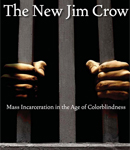 |
Alexander, Michelle. The New Jim Crow: Mass Incarceration in the Age of Colorblindness. New York, NY: New Press, The Reprint edition, 2012. |
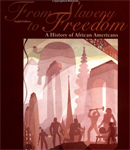 |
Franklin, John Hope. From Slavery to Freedom: A History of African Americans. Columbus, OH: McGraw Hill, 2010. |
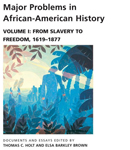 |
Holt, Thomas C., Elsa Barkley Brown, and Thomas Paterson, eds. Major Problems in African American History, Vol. 1: From Slavery to Freedom, 1619–1877: Documents and Essays. Boston, MA: Houghton Mifflin, 1999. |
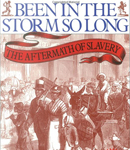 |
Litwack, Leon. Been in the Storm So Long: The Aftermath of Slavery. New York, NY: Vintage Press, 1980. |
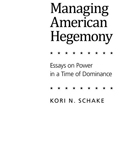 |
Schake, Kori, N., Managing American Hegemony: Essays on Power in a Time of Dominance. Hoover Institution Press Publication, 2009. www.hoover.org |
|